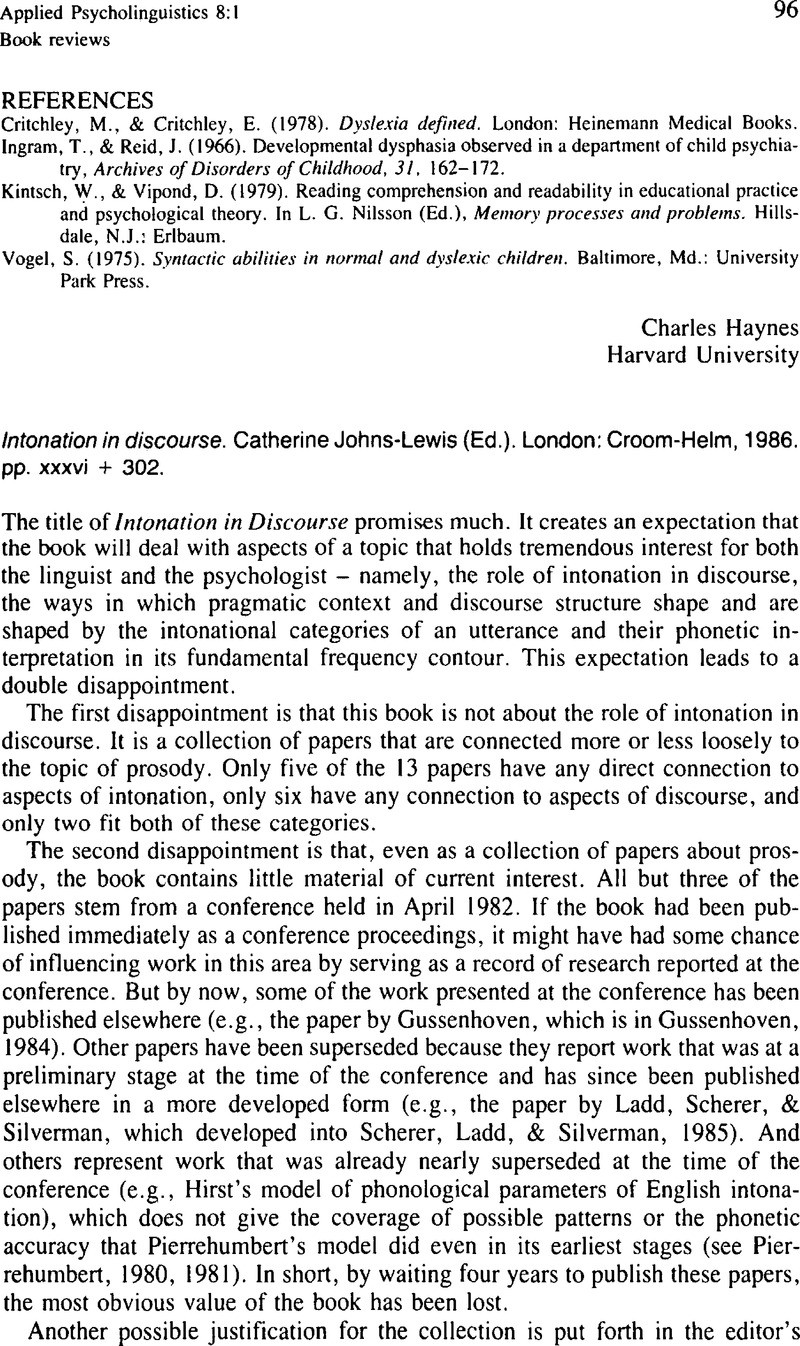No CrossRef data available.
Article contents
Intonation in discourse. Catherine Johns-Lewis (Ed.). London: Croom-Helm, 1986. pp. xxxvi + 302.
Published online by Cambridge University Press: 28 November 2008
Abstract
An abstract is not available for this content so a preview has been provided. Please use the Get access link above for information on how to access this content.

- Type
- Book Reviews
- Information
- Copyright
- Copyright © Cambridge University Press 1987
References
REFERENCES
Beckman, M. E., & Pierrehumbert, J. B. (in press). Intonational structure in Japanese and English. Phonology Yearbook, 3.Google Scholar
Currie, K. L. (1978). Recent investigations in intonation. Work in Progress, 11, Department of Linguistics, University of Edinburgh.Google Scholar
Gussenhoven, C. (1984). On the grammar and semantics of sentence accents. Dordrecht: Foris Publications.CrossRefGoogle Scholar
Ladd, D. R. (1980). The structure of intonational meaning. Bloomington: Indiana University Press.Google Scholar
Liberman, M. Y. (1975). The intonational system of English. (Ph.D. dissertation, MIT.)Google Scholar
Liberman, M., & Pierrehumbert, J. (1984). Intonational invariance under changes in pitch range and length. In Aronoff, M. & Oehrle, R. T. (Eds.), Language sound structure. Cambridge, MA: MIT Press.Google Scholar
Pierrehumbert, J. (1980). The phonology and phonetics of English intonation. (Ph.D. dissertation, MIT.)Google Scholar
Pierrehumbert, J. (1981). Synthesizing intonation, Journal of the Acoustical Society of America, 70, 985–995.Google Scholar
Scherer, K. R., Ladd, D. R., & Silverman, K. E. A. (1985). Vocal cues to speaker affect: Testing two models. Journal of the Acoustical Society of America, 76, 1346–1356.CrossRefGoogle Scholar
Vanderslice, R., & Ladefoged, P. (1972). Suprasegmental features and transformational word-accentuation rules. Language, 48, 819–838.CrossRefGoogle Scholar


